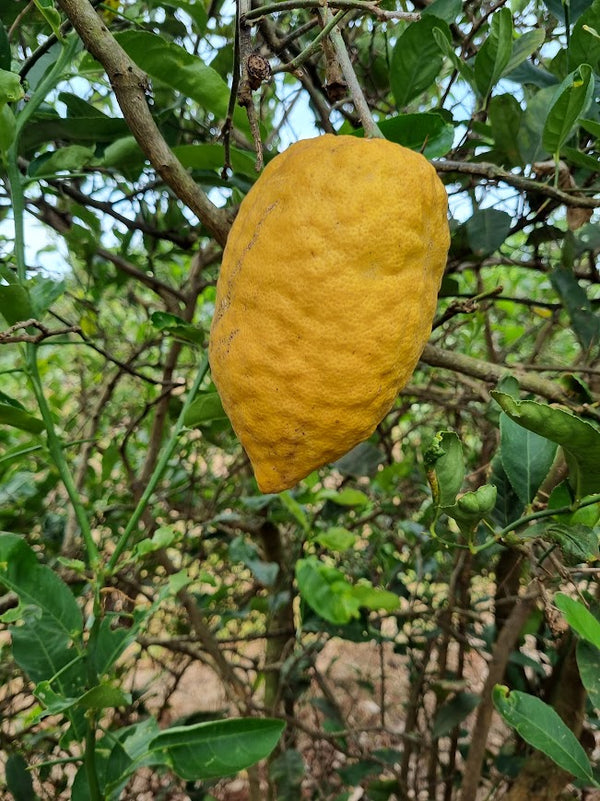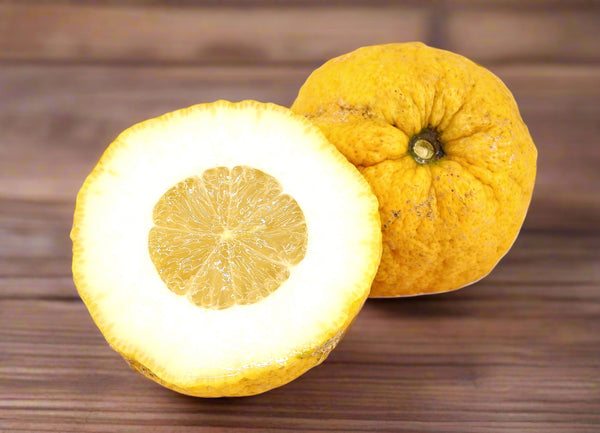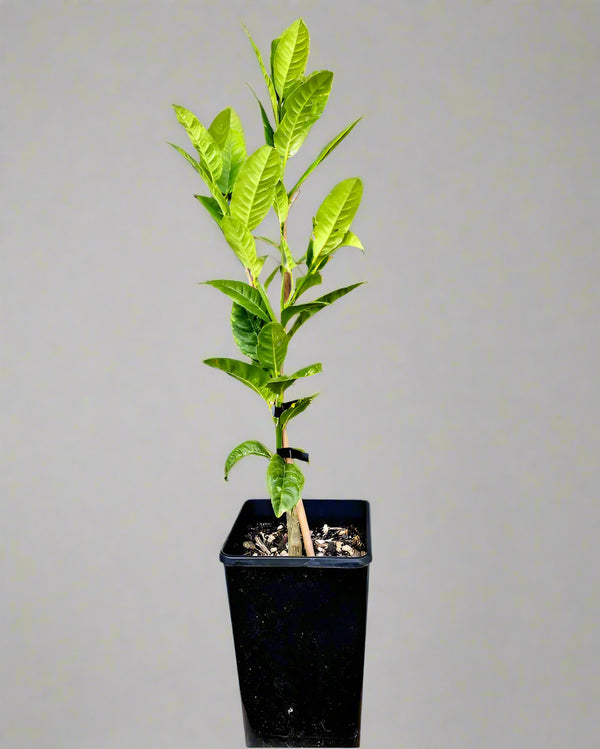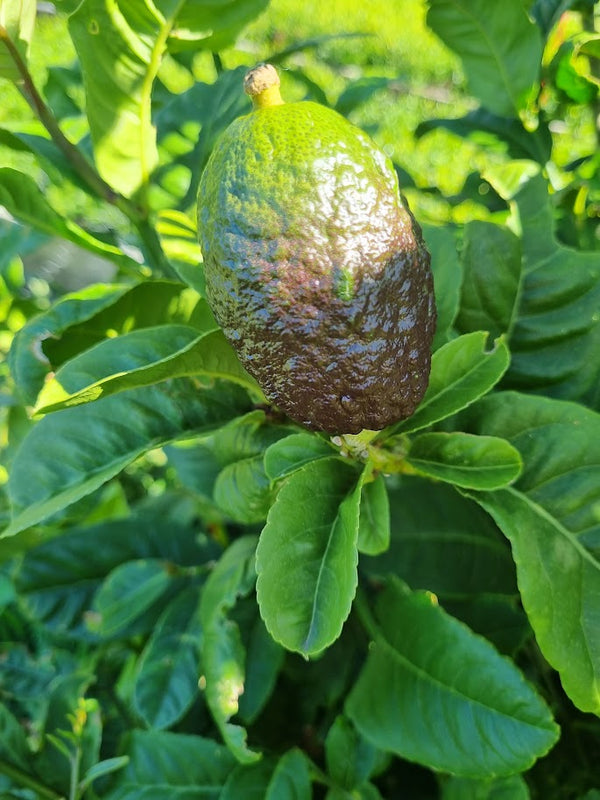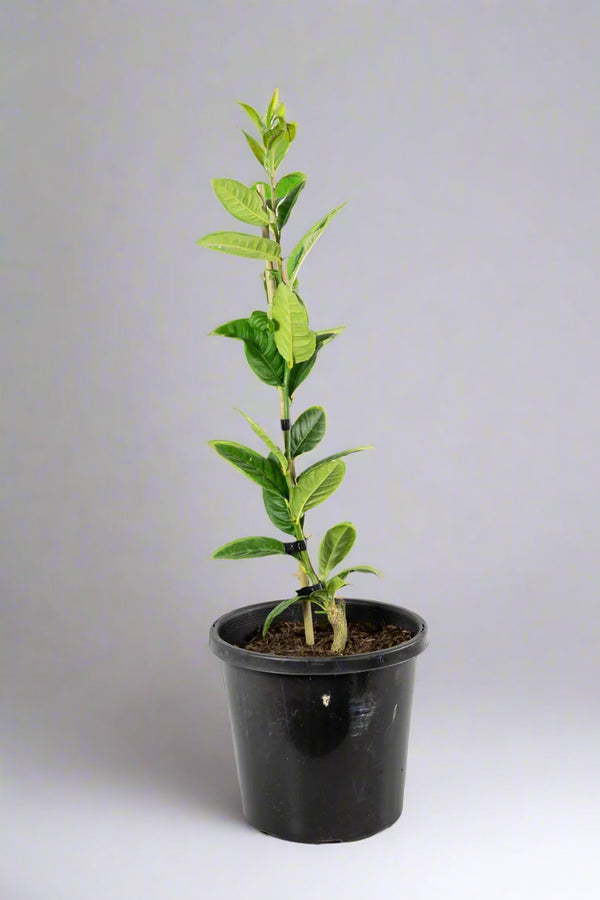
Etrog Tree (Yellow Citron Tree)
Tax included
Shipping calculated at checkout
Please note: OurEstablished Range, Medium Standard Range (14L pot), andTall Standard Range trees are available for pickup only, as their size exceeds standard courier limits.
The Etrog Tree (Yellow Citron Tree) is a botanical treasure revered for its beauty, fragrance, and cultural significance. The most captivating feature of the Etrog tree (Yellow Citron Tree) is undoubtedly its fruit. The Etrog fruit is large (10-15cm), with a thick, knobby rind. The fruit begins growing with a green-black rind. When ripe the fruit ranges from pale yellow to vibrant yellow. (See photos below). Its shape is often likened to that of a lemon, albeit with a more elongated and tapered neck. The fragrant lemon-violet scented rind of the Etrog Fruit, encases a relatively small quantity of flesh and seeds, making it less juicy than other citrus varieties.
Despite its limited culinary use, the Etrog fruit holds immense cultural, religious, and medical significance in various traditions. In some Asian cultures, the fruit is used in traditional medicine to treat various ailments, while its fragrant rind is valued for its aromatic properties in perfumery and cosmetics. Etrog is mainly grown in the Mediterranean and Middle East but it will thrive in any subtropical or Mediterranean microclimate in NZ.
|
Names |
Etrog, Yellow citron, Citron tree, Citrus medica |
|
Origin |
India |
|
Mature Size |
3 m |
|
Foliage |
Its green leaves are leathery, oblong, and emit a delightful citrus aroma when crushed. The tree often bears fragrant white flowers, adding to its ornamental appeal. |
|
Soil |
Etrog trees require fertile well drained soil |
|
Position |
Requires a sunny location. Does not like heavy frost or snow. |
|
Flavour |
Edible pith is slightly sweet and bitter. The juicy flesh is small and has a sour flavour and a pine-like citrus scent. |
|
Fruiting |
Autumn |
|
Fruit Uses |
The pith can be candied. Mainly used for religious and ceremonial purposes. Also used for traditional medicines, perfumes, and cosmetics. |

